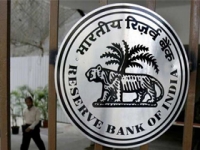In the monetary policy committee meeting held today, RBI reduced the repo rate to 6.25% from 6.5%. The central bank also changed the monetary policy stance from calibrated tightening to neutral. While the decision to change stance was unanimous, two members out of the six-member committee voted to keep the rate unchanged.
Weak global growth, decline in inflation on back of deflation in food items and fall in fuel prices and slowdown in industrial activity influenced RBI’s rate cut decision.
As a boost to the market, RBI indicated that there was room for more rate cut provided the CPI remained below 4% level in the coming year.
Pre-policy, market experts were evenly divided in terms of rate action by the central bank. Consequently, the rate cut came as a pleasant surprise for many market participants.
Devang Shah, Deputy Head - Fixed Income, Axis Mutual Fund called the policy very dovish. “RBI has lowered the inflation expectation for last quarter to 2.8%. Contrary to market concerns on fiscal slippage, the central bank did not consider it to push up inflation significantly. The growth forecasts have also been revised downwards. The committee is of the view that unless inflation surpasses 4% there could be further rate cuts to promote growth. In this scenario, investors can look to invest in short and medium term funds”, said Devang.
Lower inflation and change in Fed rate stance have influenced RBI rate cut decision, feels Mahendra Kumar Jajoo - Head - Fixed Income, Mirae Asset MF. “The move by RBI will be positive for the markets. We have seen a 5 to 7 basis point fall in 10 year g-sec yields. This will improve corporate India’s ability to get capital at a lower rate”, he added. Despite the fall in yields, investors should continue to look at high quality short-term debt funds, as the impact of rate cut has already been factored in and going forward there is still uncertainty on the duration front, he adds.
Lakshmi Iyer, CIO (Debt) & Head of Products, Kotak MF said, “Markets may remain unclear with respect to quantum of open market operations going forward. Overall, we believe that the curve is likely to steepen and short to medium term spread assets are likely to do well.”
From the market perspective, this policy may have short to medium term positive impact (especially at the shorter end of the yield curve) but it may remain neutral over long term, feels Killol Pandya, Head of Fixed Income, Essel MF. According to him, in the near term, participants are likely to draw comfort from RBI’s rate cut and focus on growth. While a short-term dip in yields is likely, in the context of the upcoming general elections, he feels long-term investors can consider investing predominantly in accrual based products and add exposure to duration in a calibrated manner. “Given our view that the dip in yields may not translate into a durable rally, for now, investors may use the recent trends as a trading opportunity”, he feels.
Sampath Reddy, CIO, Bajaj Allianz Life Insurance feels that RBI’s focus has changed from inflation primarily, to a combination of inflation and supporting growth, considering that price stability has been achieved and inflation is well below the official targets. “From an investment perspective, we continue to prefer the shorter to medium term part of the yield curve,” he added.








